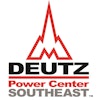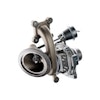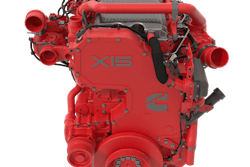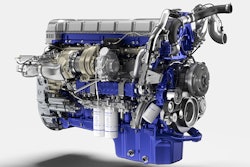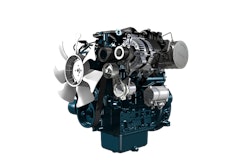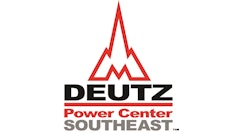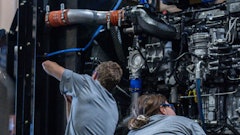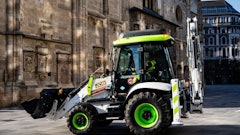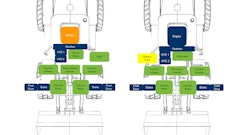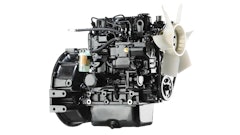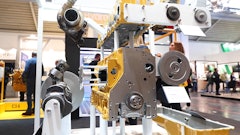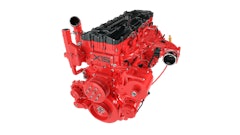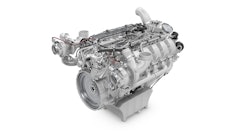
During Agritechnica 2019, YANMAR will exhibit agricultural versions of its high-power industrial engines the 4TN101 and 4TN107 which were first introduced at INTERMAT 2018. For the first time, the company will show the EU Stage V TN series in its agricultural configuration; this will include a complete aftertreatment system mounted on the 4TN101. YANMAR can be found in Hall 16, stand C54.
YANMAR's TN series combines durability and robustness with low fuel consumption and high power density. The engines in this series provide a power range of 55-155 kW (73.8-207.9 hp) and a power/torque ratio capable of meeting the requirements of a wide variety of industrial applications, including agriculture, construction and material handling.
The 4TN101 is a 3.8 L after-cooled, turbo-charged common rail engine and set to begin serial production in 2021. Meanwhile, the 4TN107 is a 4.6-L after-cooled, EU Stage V-compliant, two-stage turbo-charged common rail engine. First serial production models of the 4TN107 will be available at the end of 2019.  The agricultural configuration of the 4TN107 includes a bespoke DPF to meet Stage V emissions regulations.
The agricultural configuration of the 4TN107 includes a bespoke DPF to meet Stage V emissions regulations.
Main features of these engines include:
1.) Best-in-class fuel consumption
By implementing YANMAR’s advanced combustion technology, which has been optimized through years of manufacturing industrial and marine diesel engines, the engines achieve fuel consumption reductions of approximately 10% compared to a similar-sized engine with the same output1. The improvement in fuel efficiency results in longer operation times and contributes to significant financial savings throughout the life-cycle of the engine.
2.)High power density
YANMAR has produced a high-rigidity engine designed for high-power output. The 4TN107 features a two-stage turbocharger that gives it a class-leading power density of 34kW/L2.
3.)Outstanding torque
Thanks to YANMAR’s advanced combustion technology and application of the turbocharger, both engines deliver superior torque to meet the requirements of a wide variety of industrial fields, including construction, agriculture and materials handling. Furthermore, the 4TN107 with a two-stage turbocharger can achieve a maximum torque of 805 Nm.
4.)Compact size
The compact profile of the engine takes into account the needs of vehicle manufacturers, improving installation characteristics. YANMAR’s proprietary exhaust gas reduction technology results in a more compact exhaust gas after-treatment system markedly improving the outward visibility and the comfort level for machine operators.
5.)Maximize uptime
YANMAR’s engines utilize a Diesel Particulate Filter4 (DPF) to reduce Particulate Matter3 (PM) and a Selective Catalytic Reduction (SCR5) system to reduce harmful emissions. These technologies, which have been refined from the experience of developing smaller engines, allow the 4TN101 and 4TN107 to comply with EU Stage V regulations. With these systems in place, our customers can continue to operate their vehicles without having to stop, even at high altitude or in low temperature environments, or when working with light or heavy loads.
6.)Wide power range
The 4TN101 and 4TN107 produce outputs ranging from 55-105 kW and 90-155 kW, allowing customers to utilize their engine in a wide range of machinery with various output needs.
1. Based upon the comparison of average industry standards with our test results.
2. Power Density is the power output (kW) per displacement (litre).
3. PM: Refers to particulate matter, such as suspended particulate like soot.
4. DPF: A Filter device designed to remove particulate matter (PM) from diesel exhaust.
5. SCR: The Urea SCR (Selective Catalytic Reduction) system utilises ammonia generated from urea water to deoxidise, cleanse and detoxify NOx contained in the exhaust gas.

